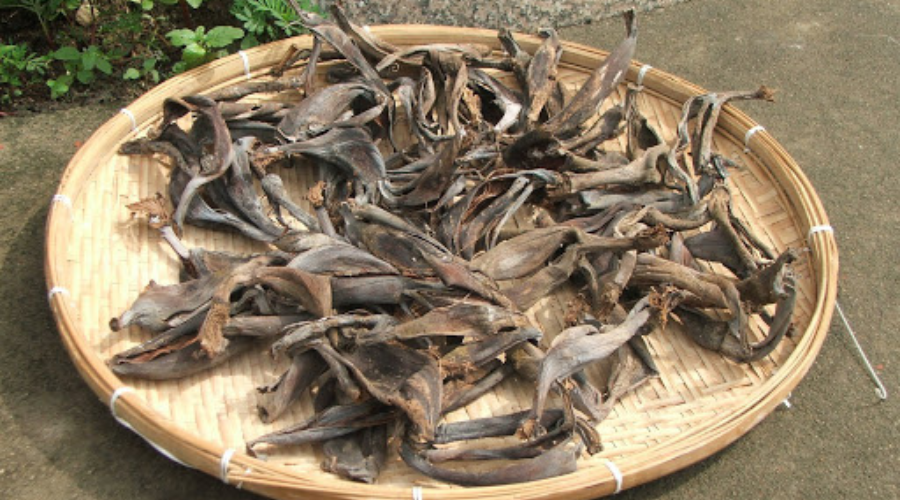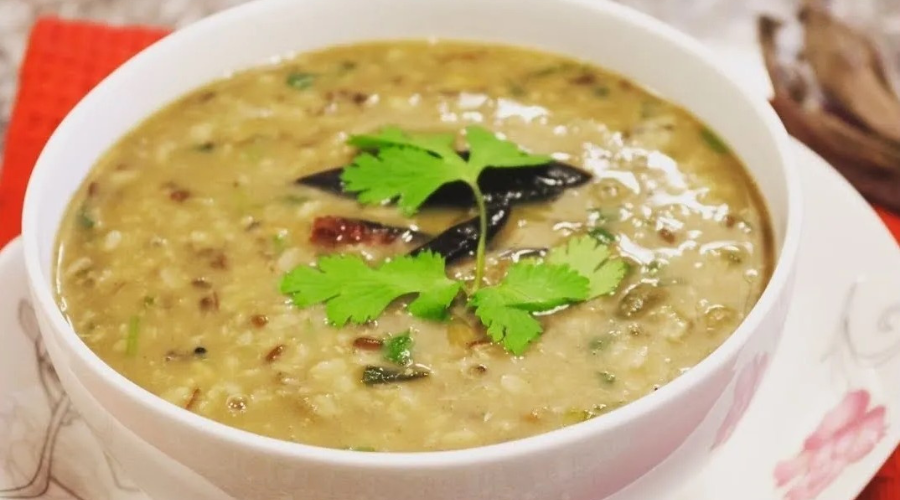Assamese cuisine is considered one of the most distinctive food traditions. Beyond spices or elaborate cooking techniques, it celebrates seasonal produce and natural flavours. While most dishes are made with minimal oil, fresh and locally grown ingredients, what truly makes Assamese food stand out is its preservation of the six rasas—sweet, salty, sour, bitter, pungent, and astringent. While the uniqueness lies in balancing all six of these, the astringent taste is rare, and that’s where Khar takes the spotlight.
Khar is an addictive dish exclusive to Northeast India. It is traditional alkaline water made by filtering water through the ashes of sundried banana peels, and is celebrated as both an ingredient and a dish.
Origin of Khar
Khar is a dark brown liquid with a strong astringent smell, typically made from banana peel ashes. The banana variety used for making khar, Musa balbisiana, is a native variety found in Southeast Asia, but in India, it is primarily found in the wilds of the Northeast. Khar is prepared with sun-dried banana peels, specifically made from the local bhim kol variety. While Khar’s exact origins are unknown, one interesting fact is that it was used as a substitute for salt in ancient times. The Northeastern region naturally has a salt shortage, with Assam locked off the coast. The alkaline water from Khar perfectly balances this shortage.

Chef Nambie Marak, a food storyteller and Masterchef India runner-up for Season 8, shares Khar’s versatility in the Garo tribe of Meghalaya. “I am from the Garo tribe, and Khar, also known as Kalchi or Kratchi, is extensively used in most dishes we cook,” added Marak. She shares how Khar in the Garo cooking is not just made from the banana peel, but also from the bamboo trees.
“While the ash from the banana peel is dark in colour, the one obtained from bamboo is clear, while the process remains the same,” added Marak. Khar is highly rated for its taste and nutritional values, besides just adding to the alkalinity of the dish. It contains minerals like potassium, sodium, iron, cobalt, manganese, nickel and zinc, which are essential for health. The dark, smoky, mineral-rich liquid is also used in cooking lentils, vegetables, and pork. “Khar is extensively used in Assamese and Meghalayan cooking and is mostly used to soften meat, pork, and other veggies,” said Marak. There are about seven khar dishes made in Assam, like Lau Khar, where bottle gourd is simmered in alkaline sour water for a soft, creamy bite, to Aloo Khar, featuring tender potatoes steeped in the same tangy base—each variation brings its own texture and mellow bitterness.
The list also includes Matikor Khar made with fenugreek greens, Bilahi Khar with tomato’s tang, Mankho Khar combining fish and papaya, Masor Khar (fish in sour water), and Kol Khar, made from banana stems for a crisp contrast. “In the Garo style cooking, khar is also used in our traditional dish, Do’o Kapa, a spicy chicken and pork preparation made with green chillies, ginger and Kalchi(Khar),” added Nambie.
Along with being full of nutrients, raw khar mixed with rice and a few drops of mustard oil is also used for stomach ailments or colds. Chef Marak told Outlook Traveller Eats that Khar also removes bitterness from certain wild leaves. “Elders say khar cleans the mouth and balances the body after rich and meaty meals. It is used in tiny amounts and does its magic without overpowering the taste,” added Nambie.
Khar is a full-fledged household magic wand, from being used in cooking to acting as a natural preservative, it is an age-old ingredient that quietly holds the essence of Assamese culinary traditions.









